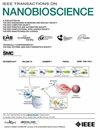化学和生物合成纳米银的免疫影响差异。
IF 4.4
4区 生物学
Q1 BIOCHEMICAL RESEARCH METHODS
引用次数: 0
摘要
银纳米颗粒(AgNPs)因其抗菌特性而被广泛使用,但也存在环境污染和对人体健康的潜在危害等风险。纳米颗粒的小尺寸便于在体内移位,经常使它们与血液接触。大多数毒理学研究集中在化学合成AgNPs (CAgNPs)及其对微生物和动物细胞的影响上。较少的研究探索生物合成AgNPs (BAgNPs)对动物细胞的影响,由于其大小和稳定性的差异,它们对血液成分的影响是不确定的。本研究检测了健康和患病状态下BAgNPs对血液成分的影响,利用kessleri副伞藻进行合成。通过透射电镜和紫外可见分光光度法测定纳米颗粒的大小和形态。暴露于BAgNPs导致棘细胞数量增加,中性粒细胞减少,白细胞活力降低。与CAgNPs不同,BAgNPs不增加巨噬细胞的增殖。BAgNPs和CAgNPs生物学特性的差异源于它们在不同环境下的胶体稳定性。静电稳定的CAgNPs在高盐度和低pH的环境中表现出更大的聚集,从而降低了它们在人体血液中的生物效应。因此,静电稳定的化学生产的AgNPs可能不适合生物医学应用。本文章由计算机程序翻译,如有差异,请以英文原文为准。
Differences in Immunological Impact of Chemically and Biologically Synthesized Silver Nanoparticles
Silver nanoparticles (AgNPs) are widely used for their antimicrobial properties but pose risks like environmental contamination and potential harm to human health. Nanoparticles’ small size facilitates translocation within the body, often bringing them into contact with blood. Most toxicological research focuses on chemically synthesized AgNPs (CAgNPs) and their effects on microbes and animal cells. Fewer studies explore biologically synthesized AgNPs (BAgNPs) on animal cells, and their impact on blood components is uncertain with varied findings due to differences in size and stability. This study examined BAgNPs’ effects on blood components in healthy and diseased states, using algae Parachlorella kessleri for synthesis. Nanoparticle size and morphology were assessed via TEM and UV-Vis spectrophotometry. Exposure to BAgNPs resulted in an increased number of echinocytes, reduced neutrophils, and decreased leukocyte viability. Unlike CAgNPs, BAgNPs did not increase macrophage proliferation. Differences in biological properties between BAgNPs and CAgNPs stem from their colloidal stability in varying environments. CAgNPs, stabilized electrostatically, exhibited greater aggregation in environments with higher salinity and lower pH, diminishing their biological effects in human blood. Hence, electrostatically stabilized chemically produced AgNPs may not be suitable for biomedical applications.
求助全文
通过发布文献求助,成功后即可免费获取论文全文。
去求助
来源期刊

IEEE Transactions on NanoBioscience
工程技术-纳米科技
CiteScore
7.00
自引率
5.10%
发文量
197
审稿时长
>12 weeks
期刊介绍:
The IEEE Transactions on NanoBioscience reports on original, innovative and interdisciplinary work on all aspects of molecular systems, cellular systems, and tissues (including molecular electronics). Topics covered in the journal focus on a broad spectrum of aspects, both on foundations and on applications. Specifically, methods and techniques, experimental aspects, design and implementation, instrumentation and laboratory equipment, clinical aspects, hardware and software data acquisition and analysis and computer based modelling are covered (based on traditional or high performance computing - parallel computers or computer networks).
 求助内容:
求助内容: 应助结果提醒方式:
应助结果提醒方式:


